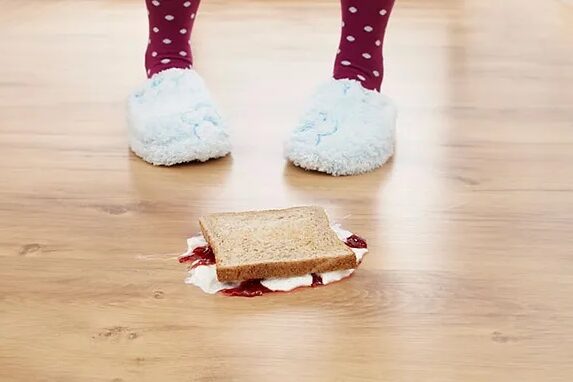Imagine that you are carefully preparing a sandwich, with whole grain bread and a little lettuce, when, for some reason, it ends up on the floor. No one witnessed the incident, and after a slight blow they decided to eat it. But what does science tell us about this apparently trivial act?
As children we heard about the “five-second rule”: If we pick up food from the floor in five seconds, everything will be fine. As if bacteria were generous enough to give us that much time. “Five, four, three, two, one…attack!” This is how bacteria behave, and they are ready to eat.
Some more careful people blow, shake, or remove the lint with their hands, the site tells us. time. This behavior may strengthen the immune system, but regarding food safety, there are still some open questions. Of course, they may have done this multiple times without serious consequences. However, the topic is worth exploring.
We can assume that the time the sandwich spends on the floor is crucial. The longer it takes, the more insects there are. Surprisingly, this factor is not as specific as we thought, and varies depending on the type of food. But we will come back to that soon. Another important factor is the cleanliness of the floor.
If we are outside, it is difficult to predict what might be on Earth. At home, we can feel more comfortable if we have cleaned recently, and take off our shoes when entering. It is not necessary to leave it at the door, but it is recommended to take it off when entering the house to avoid bringing dirt from the street inside. It's not necessary, but it's a reasonable precaution.
The type of surface the food lands on is also important. It's not the same as falling on tile, wood, or carpet.
In the experiments conducted, salmonella was inoculated into different types of soil and then placed on a bread sandwich with mortadella. Surprisingly, it was carpet that transferred the least amount of bacteria to food, followed by tiles, and finally wood, which transferred up to 70% of inoculating bacteria.
Another factor to consider is the type of food, as different foods attract different types of bacteria.
Therefore, we must take into account: the type of surface, its cleanliness, the type of food, and finally, the duration of its contact with the ground. But we forgot one last factor.
Did you wash your hands before eating?
Every day, we touch countless surfaces contaminated with a variety of bacteria. We handle money, cell phones, handrails, and share pens. As we realize that we are surrounded by these bacteria, we oscillate between fear and resignation. It's natural, but it's also knowledge and common sense.
So, through hygiene, hand washing, consideration of risk groups and risk analysis, we can make our own decisions about whether or not to eat the sandwich, based on the best knowledge available to date.
Read also: This is where the country's richest people live. The Algarve is on the list

“Wannabe internet buff. Future teen idol. Hardcore zombie guru. Gamer. Avid creator. Entrepreneur. Bacon ninja.”

